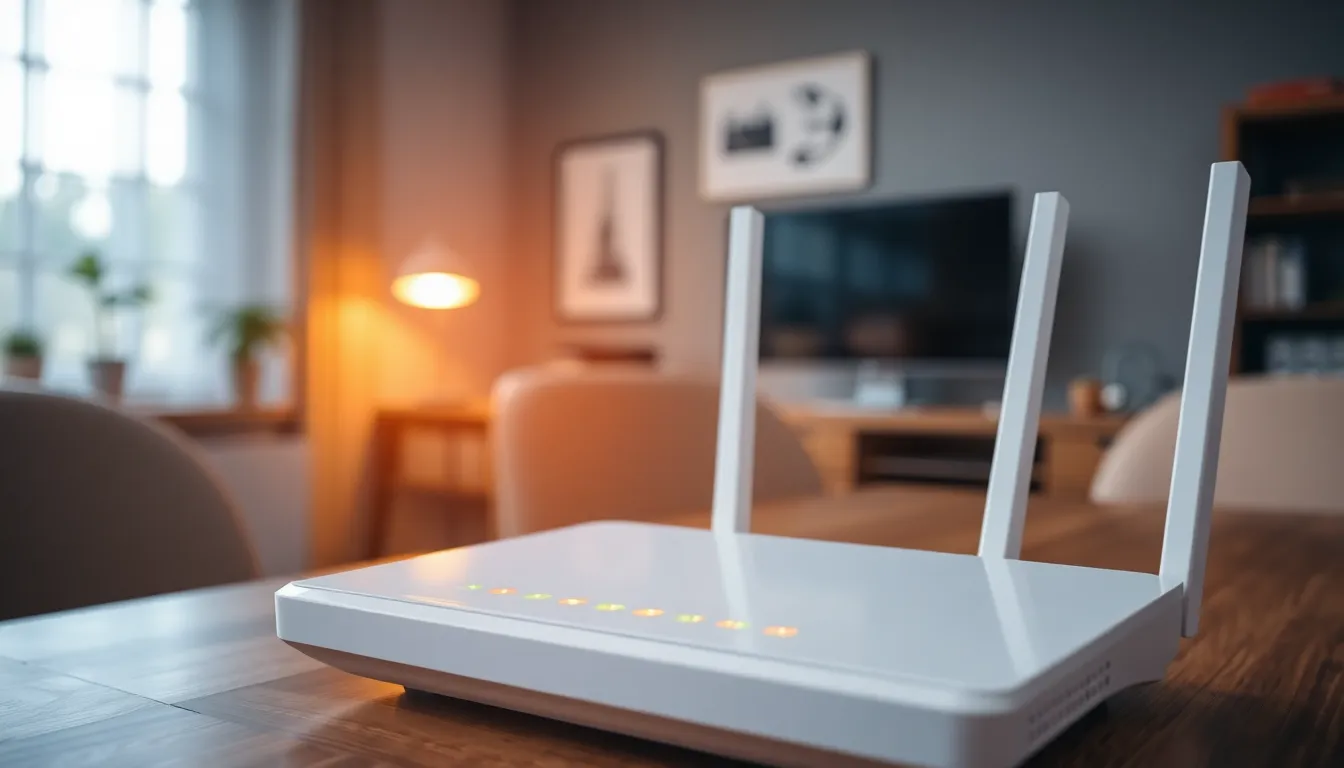Table of Contents
ToggleIn the wild world of Wi-Fi, WEP security once strutted around like the king of the jungle. But let’s face it—its reign didn’t last long. If WEP were a superhero, it’d be the one with a cape full of holes. While it promised to keep prying eyes at bay, savvy hackers found it easier to crack than a nut in a toddler’s hand.
So what exactly is WEP security? It’s the ancient ancestor of wireless encryption protocols, designed to protect your precious data from eavesdroppers. But in today’s digital landscape, relying on WEP is like using a floppy disk to store your selfies—outdated and risky. Dive into the world of WEP security and discover why it’s time to upgrade to something a little less… vulnerable.
What Is WEP Security
WEP, or Wired Equivalent Privacy, emerged as an early wireless encryption standard. Its primary goal focused on providing a level of security comparable to wired networks. The protocol relies on a shared key for encryption, allowing users to connect securely and access network resources.
Despite its initial intentions, vulnerabilities quickly surfaced. Security experts discovered multiple weaknesses in WEP, making it easy for attackers to decrypt data. Tools developed for exploiting these flaws enabled hackers to intercept communications within minutes. This compromised data integrity and confidentiality, significantly endangering users’ information.
Implementation of WEP posed additional challenges. Configuring WEP required technical knowledge, making it difficult for non-experts to set up securely. Many users chose weak passwords, inadvertently increasing their risk of unauthorized access. Consequently, the combination of vulnerabilities and poor user practices led to widespread security breaches.
In light of these issues, alternatives to WEP emerged. WPA (Wi-Fi Protected Access) and WPA2 offered stronger encryption methods and improved security features. Users successfully adopted these modern protocols, effectively replacing WEP in most networks.
Evaluating WEP’s legacy reveals its insignificance in contemporary security. Organizations continue to recommend upgrading to more secure options. Relying on outdated protocols like WEP jeopardizes sensitive data, highlighting the need for advancements in wireless security standards.
Understanding WEP Encryption

WEP stands for Wired Equivalent Privacy, an early wireless encryption protocol designed to secure data in a manner similar to wired networks. Its primary purpose was to ensure data confidentiality over wireless connections.
Key Features of WEP
WEP utilizes a shared key for encryption, requiring a pre-shared secret for both sending and receiving data. It employs the RC4 stream cipher for encrypting data packets, a method that initially provided a layer of security. Authentication mechanisms, such as Open System and Shared Key, were integrated to verify users attempting to connect. Additionally, WEP adheres to a standard key length of 64 bits or 128 bits, giving users options for varying levels of security. Such features gave WEP the semblance of robustness during its inception.
Limitations of WEP
WEP’s encryption quickly proved vulnerable. The RC4 cipher contained weaknesses that attackers exploited, enabling them to decrypt data with little effort. Weak passwords also left many networks susceptible to breaches, as users often neglected to implement strong credentials. Moreover, WEP employed relatively short initialization vectors, which increased the likelihood of collision and compromised security further. Installation difficulties contributed to misconfigurations, resulting in additional security risks. These limitations culminated in WEP’s decline, prompting the development of more secure protocols like WPA and WPA2.
Evolution of Wireless Security Protocols
Wireless security protocols have evolved significantly, driven by the necessity to address vulnerabilities found in earlier systems.
From WEP to WPA and WPA2
WEP was the initial standard, but its flaws led to the rapid development of WPA in 2003. WPA introduced the TKIP encryption method, enhancing security with dynamic key generation. WPA2, released in 2004, further improved upon these measures by adopting AES encryption, which is much more secure. Both WPA and WPA2 offered better protection against unauthorized access, making them preferable choices for modern networks. Security experts emphasized transitioning from WEP due to its ease of exploitation. As a result, the adoption of WPA and WPA2 became widespread, with many organizations prioritizing these protocols to secure sensitive information. Overall, the progression from WEP to WPA and WPA2 illustrates a significant leap in the wireless security landscape.
Importance of Wireless Security
Wireless security plays a crucial role in protecting sensitive data from unauthorized access. When considering WEP security, its vulnerabilities significantly undermine the security of wireless networks. High-profile breaches often result from weak encryption methods, demonstrating the necessity for robust protective measures.
Organizations must prioritize the adoption of newer protocols like WPA and WPA2. These protocols offer enhanced security features that safeguard data against various threats. WPA employs TKIP to address WEP’s flaws, while WPA2 utilizes AES encryption for even greater protection. Choosing these modern standards greatly reduces risks associated with wireless communication.
In addition, many users remain unaware of the importance of strong passwords and proper network configuration. Implementing complex passwords and ensuring correct setup can drastically enhance a network’s security. Heeding best practices in wireless security can prevent intrusions and data breaches.
Moreover, as data breaches become increasingly common, prioritizing wireless security remains paramount for all users. Inadequate security can have catastrophic consequences, including financial losses and reputational damage. Understanding the risks associated with relying on outdated protocols like WEP is essential for any organization aiming to protect sensitive information.
Ultimately, enhanced wireless security goes beyond compliance. It builds trust with customers and partners by ensuring that their data remains safe. Strong encryption and updated protocols form the foundation of a secure wireless environment that meets today’s challenges.
WEP security has proven to be an inadequate choice for protecting sensitive data in today’s digital landscape. Its vulnerabilities and ease of compromise make it a relic of the past. Organizations must recognize the urgency of transitioning to more secure protocols like WPA and WPA2. These alternatives not only offer stronger encryption but also enhance overall network integrity. Prioritizing robust wireless security is crucial for safeguarding data and maintaining trust with customers and partners. As cyber threats continue to evolve, embracing modern security measures is essential for any organization that values its information and reputation.




